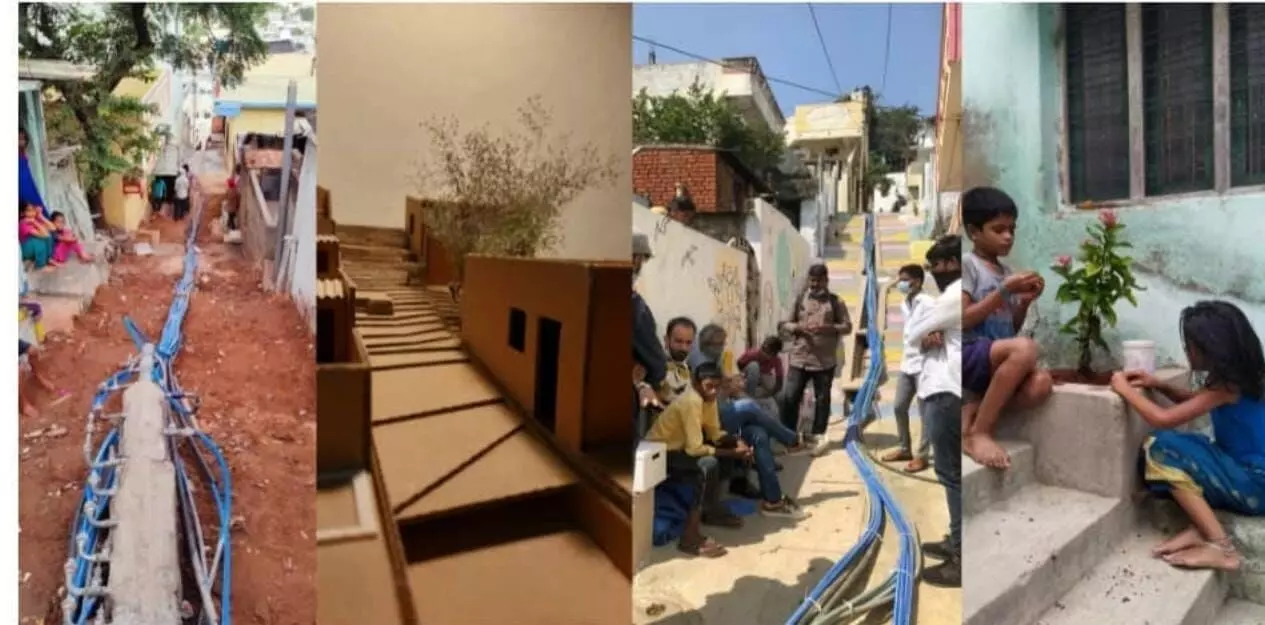In pursuit of happiness: How researchers set up HUL
A non-profit institution founded on the values of openness, collaboration, and entrepreneurship
By Nikisha Uddagiri
Hyderabad: Hyderabad Urban Lab (HUL) is a non-profit institution that stands on the pillars of openness, collaboration, and entrepreneurship. Established in 2011 by a group of visionary founders, HUL aims to leverage academic capabilities to address community needs and remain deeply connected to the local communities.
Since its inception, HUL has been actively engaged in studying and understanding the issues and challenges faced by the local communities. One of their earliest projects involved a two-year study of Bholakpur, a scrap market that was facing water contamination since 2009. The study helped the team identify the source of contamination and take corrective measures to ensure the safety and well-being of the local community.
“Then we continued doing similar studies in other places. The idea is that we should understand Hyderabad very well. We wanted to use this experience and understand other cities as well,” said Anant Maringanti, on e of the founders of Hyderabad Urban Lab.
They started working on making neglected open spaces in slums safe for women and children. Besides, efficient public toilets, rejuvenating local markets, clearing garbage and construction debris dumps, and reclaiming such lands also formed their key responsibilities.
Hyderabad Urban Lab follows the concept of Urban Acupuncture coined by Jaime Lerner, which aims to heal, improve and create a positive chain reaction in the urban environment.
“As we wanted to do something to demonstrate how we can handle better, we organized competitions wherein a group of students suggested developing a place near Mahendra Hills. All we did was mentor them. We wanted to convert a hill slope, which was in bad condition, into a nice social place. A proper channel for the water pipeline and a staircase that has enough room for people to sit. So it became a place where water could be drained off easily,” Anant said.
HUL thought of working on similar lines and doing more such projects. “This year, we planned to do about 6 projects in different locations. One of them is a well that is dried and we wanted to clean the well, clear the garbage, and turn it into a social place. Another one is a slum in Miyapur, where children are playing in the garbage. We want to clean and create a small play area for those children.”
When approached for permissions, the government has shown interest in HUL's work and signed an MoU for the institution to undertake 100-120 projects, instead of the six initially planned.
HUL is open to crowd-sourcing ideas from the public to identify locations, resources, and ideas for these projects.
HUL is also incubating urban innovation by inviting architecture students to come up with plans to redesign space near a residential area. The winning projects will receive mentorship from HUL and be provided with CSR funds to execute them.
Anant Maringanti, hopes that the interconnected parks and projects will lead to a positive chain reaction, improving Hyderabad's urban environment. He says, “My dream was we should do 50 projects across the city. In fact, I was thinking 50 wouldn’t be even possible this year."
He further says, "The idea is that this should be about doing several small thing which connected to each other. The institution's collaborative, open, and entrepreneurial approach to urban innovation sets it apart and makes it an essential partner for any urban development project in Hyderabad."